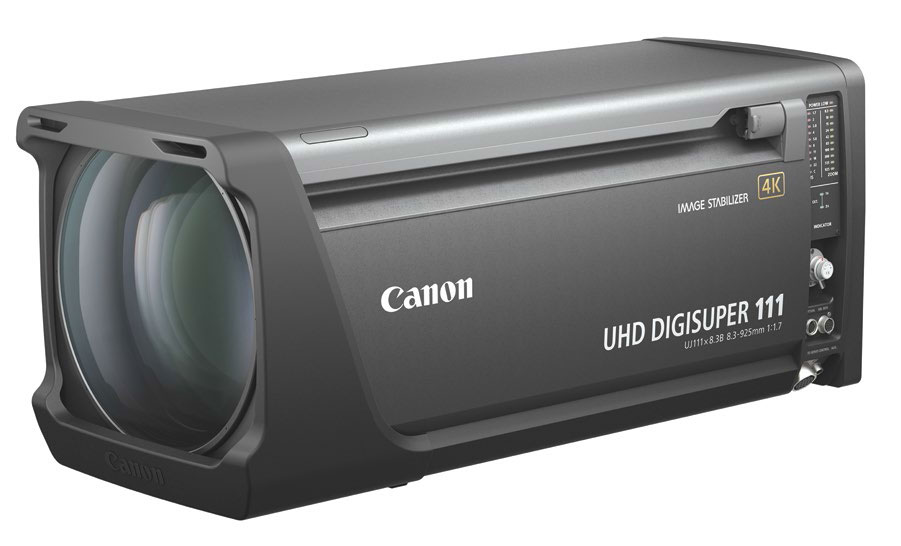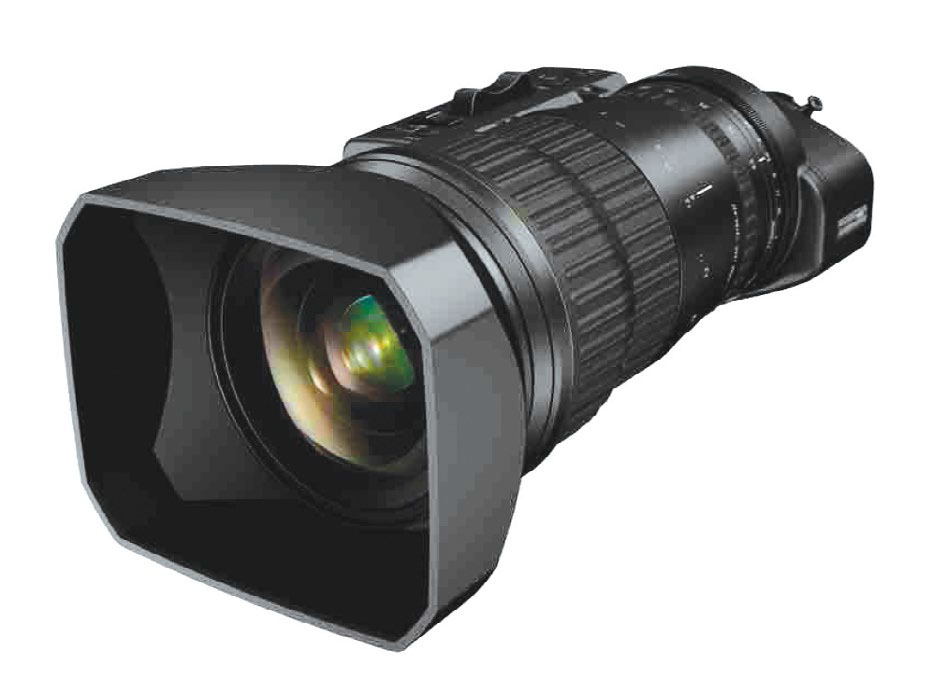Broadcast Zoom Lenses: Behind the Numbers
CHELMSFORD, U.K.—It’s been clear for awhile that manufacturers can now build cameras with more or less any desired resolution, so it’s increasingly difficult to compete on resolution figures. Unless we’re intent on sitting 18 inches from a cinema screen, resolutions beyond 4K, and certainly beyond 8, risk being seen as an attempt to create a marketable bullet point.
In lenses, things are different: an 18:1 zoom has a wider zoom range than a 17:1 zoom, and everyone, especially in the crucible of handheld newsgathering work, quite reasonably wants a lens that covers as much ground as possible. Longer-ranged zoom ranges also mean more difficult engineering, while at the same time, those high-res cameras have begun to demand every drop of sharpness from the lenses they’re used with.

CLEVER ENGINEERING
Two recently-announced competitors in the broadcast lens race are the Fujinon UA46x9.5BERD and Canon’s Digisuper 122, the UJ122x8.2. They’re not competitors with each other, exactly, since the Fujinon is a (reasonably) portable zoom, while the Canon is a big-box lens for studio or OB camerawork.
Nonetheless, nobody will object to the idea that there’s a certain rivalry in play here. The Fujinon 46x9.5 compares in specification to Canon’s CJ45ex9.7, which appeared at the end of 2017. The Canon UJ122x8.2 is less easy to associate with a specific competitor, but Fujinon have been offering a beyond-100x broadcast lens, the 107x8.4, as “the world’s longest zoom ratio” since at least IBC last year.
Free-market economics in action, then.
While it’d probably be quite accurate to see this as a bit of good-natured one-upmanship there’s also a very significant amount of clever engineering going on. We’ve talked about 4K, which matters, but the emergence of high dynamic range imaging also has implications for lenses. Previously, a lens might not have been expected to encounter such huge ranges of light and shadow, at least not with the expectation of a reasonably flare-free image. Now, with HDR, both sharpness and contrast need to be better controlled than would have been OK a while ago. The two things are readily confused–a higher-contrast image generally looks sharper, all else being equal–but the engineering required to achieve both is complex nonetheless.
Both companies make reference to this concern in their literature. Canon, for instance, refer to their “air sphere coating” in literature about the 122x8.2 lens, specifically referring to HDR and wide colour gamut. Fujinon’s brochure for their broadcast lens range, including both portable and box lenses, calls the flagship series “4K Plus Premier,” with the 107x8.4 in the “4K Premier” range. The former is marked in gold text; the latter in silver. Make of that what you will, but it’s clear that at really long zoom ranges there has to be some sort of compromise.
Canon and Fuji are keen to promote the suitability of their lenses for UHD, and even beyond-UHD work. Both organizations are, of course, based in Japan, where the national broadcaster has been pushing 8K for some time. It’s been referred to as “Super Hi-Vision” by NHK and makes some very serious demands on the sharpness of lenses. The broadcaster is to launch an 8K channel in December this year, clearly in preparation for the Tokyo Olympics in 2020.
In a similar vein, Sony announced its 8K UHC-8300 broadcast camera in 2017, which is interesting because it is designed for the same B4-mount lenses as existing broadcast cameras. It uses an optical relay assembly to allow a lens intended for 2/3-inch image sensors to land a picture on the larger 8K chips, but the lenses themselves are the same. There are other 8K cameras, but few or none use conventional broadcast lenses, and so don’t put crews in such a familiar environment.
HOW MUCH LIGHTING IS NEEDED?
Can even the best modern lenses stand this sort of heat? It’s is a difficult thing to evaluate, because there aren’t really any standards for the way zoom lenses are assessed. Metrics such as modulation transfer function, involving a test chart with vertical black and white stripes, are commonly used to test resolution, but there’s no widely-recognized way of applying that sort of test to a zoom where the characteristics change as the controls are manipulated.

Most zooms perform best in the middle of their range of focal lengths and away from the extremes of iris, so that often, more light still make things work better, even now. Still, modern lenses such as the the Fujinon UA46x9.5 and the Canon UJ122x8.2 work better at wider apertures than those of even a few years ago, so we can not only shoot 8K, we can probably do it with less light than we’d have needed for similar results a few years ago.
Both of these lenses have siblings of slightly different configuration–Canon’s UJ111x8.3 is fractionally shorter than the 122x8.2 in maximum reach while being about the same size and weight, but should reasonably be cheaper (none of the lenses discussed here yet have public pricing.) The Fujinon UA46x9.5 is complemented by a longer 46x13.5. Perhaps more important than the raw numbers, though, is the idea that all these modern cameras, with their huge pixel counts, can be paired with more capable lenses than ever before.
Both Canon and Fujinon have respected ranges of cinema zooms which are making for faster, easier work in that field too, to the point where even the most experienced cinematographers can sometimes be persuaded to argue against the inconvenience of primes. The engineering concerns of a cinema lens are at least a little different, but the ability to frame things as we’d choose, with a minimum of compromise and inconvenience, are hard to argue with.
Get the TV Tech Newsletter
The professional video industry's #1 source for news, trends and product and tech information. Sign up below.
